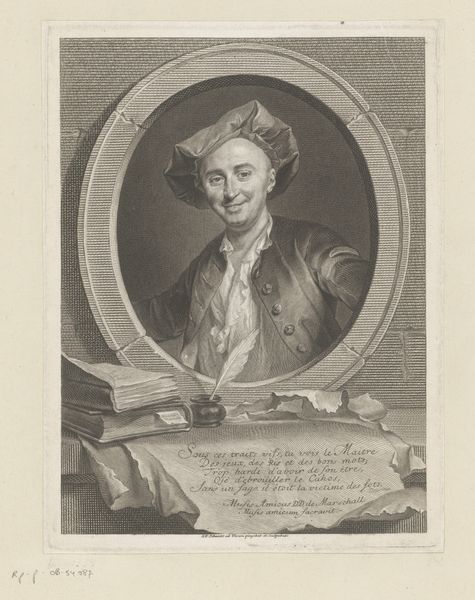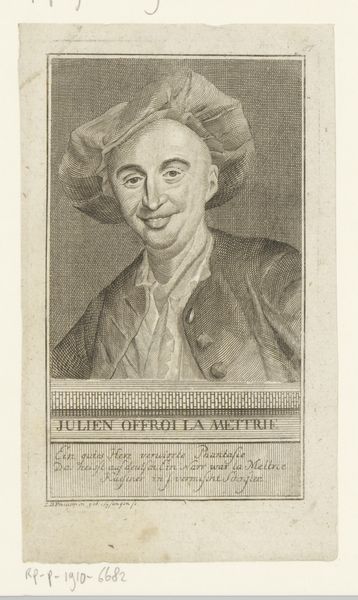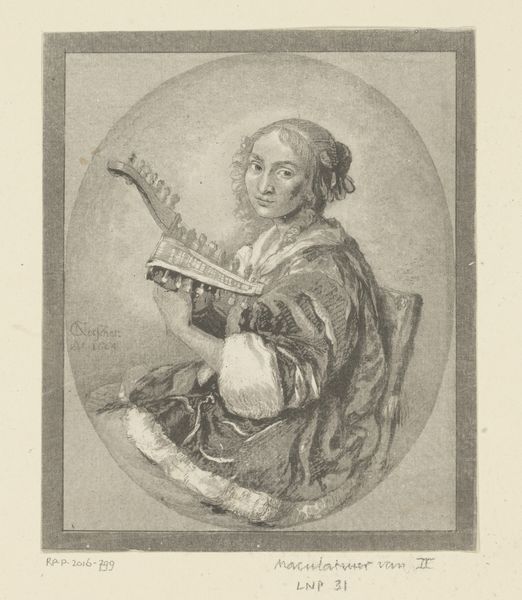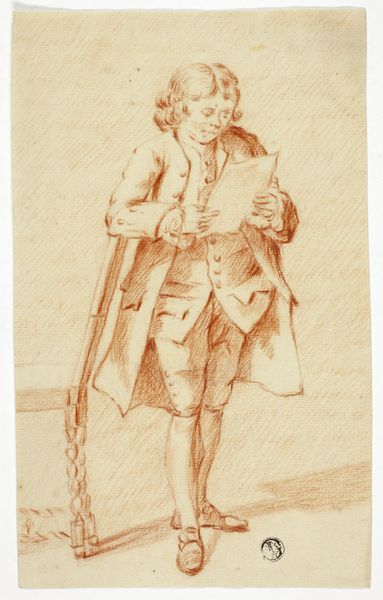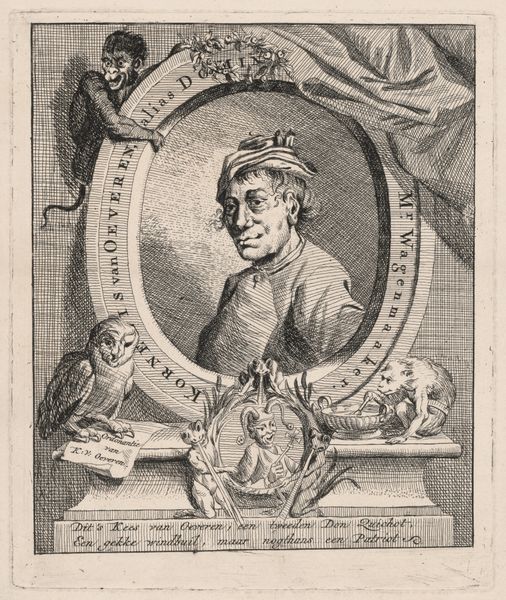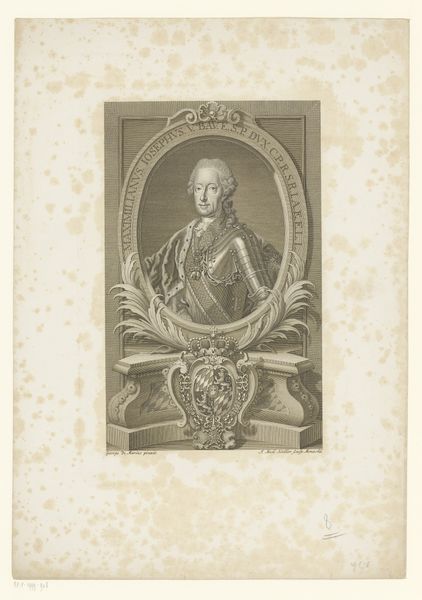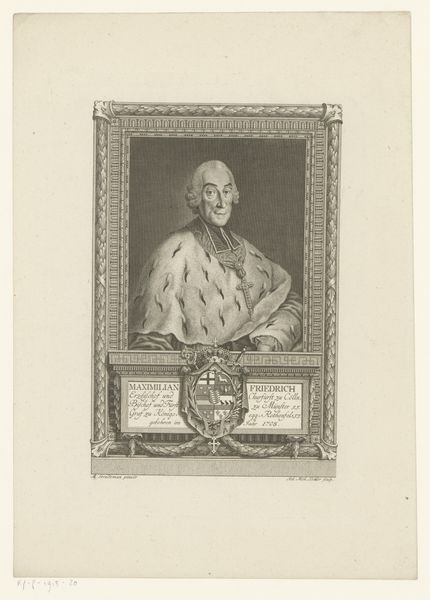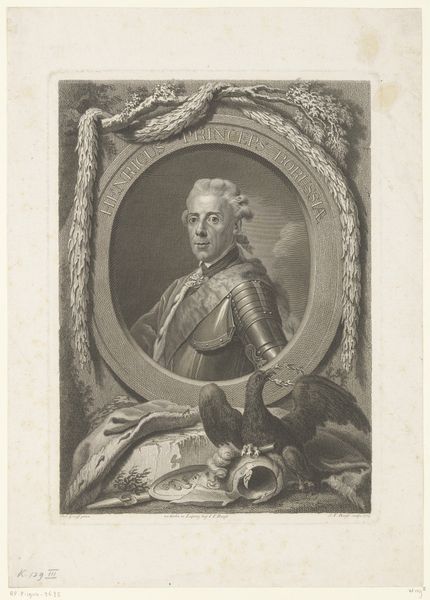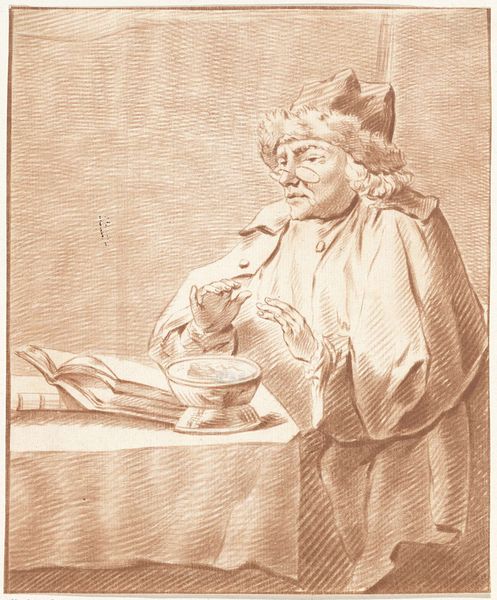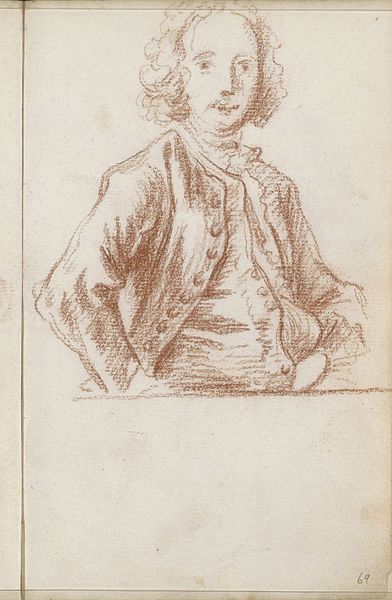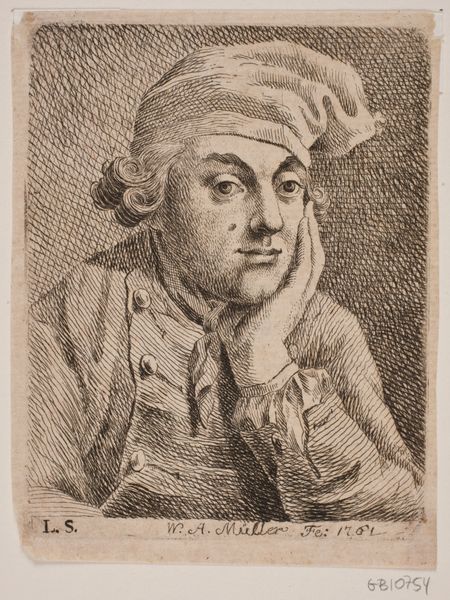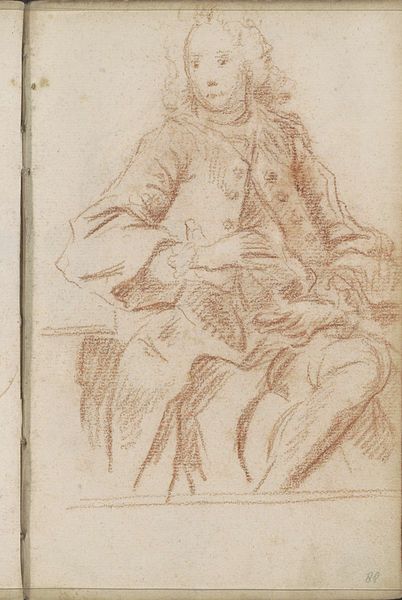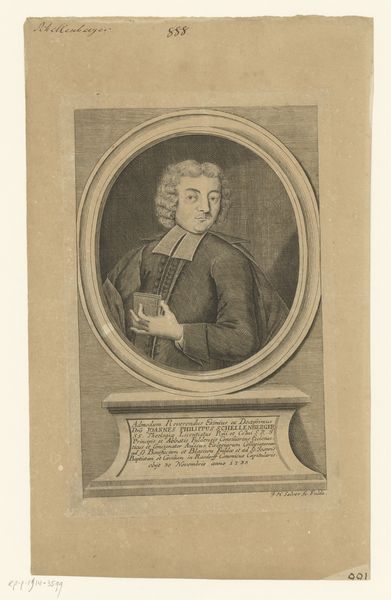
Portrait of Julien Offray de La Mettrie (1709–1751) 1770
0:00
0:00
drawing, pencil, charcoal
#
portrait
#
drawing
#
neoclacissism
#
charcoal art
#
pencil
#
charcoal
#
realism
Dimensions: 12 9/16 x 9 3/16 in. (31.91 x 23.34 cm) (sheet)
Copyright: Public Domain
This drawing was made in 1770 by Georg Friedrich Schmidt, and it depicts Julien Offray de La Mettrie, quill in hand. Note how the quill, the inkwell, and the books are not merely objects, but symbols laden with meaning. The quill, especially, has ancient roots. Consider its parallel to the scepter or the staff of a leader, emblems of power, authority, and creativity. The placement of the quill mirrors depictions of figures like Saint Matthew, who is often shown with a quill as he writes his Gospel. The quill, therefore, takes on a deeper significance, suggesting a divine or inspired act of creation. These symbols, through their repeated use, awaken something within us, an echo of collective memory. This emotional resonance engages viewers on a profound, subconscious level. The pen and ink are transformed in our collective consciousness as symbols that transcend temporal constraints. The motifs have resurfaced, evolved, and taken on new meanings in different historical contexts.
Comments
minneapolisinstituteofart over 1 year ago
⋮
A native of Berlin, Schmidt came to Paris to study printmaking with Nicolas Larmessin and became a member of the Royal Academy in 1742. He returned to Berlin in 1744 to serve as engraver to the King of Prussia and in 1757, established a school for printmakers at Saint Petersberg. The subject of Schmidt’s portrait, Julien Offray de La Mettrie (1709–1751) was a brilliant yet controversial physician. After publishing The Man-Machine in 1746, a scathing satire on the medical profession, Mettrie was forced to flee from France. In 1748, he was invited to reside at Berlin by Frederick II of Prussia who became an intimate friend. Mettrie, a resolute gourmand expired in 1751 of indigestion after dining on venison paté and truffles. The drawing was probably executed between 1748 and 1751. After 1760, Schmidt himself engraved the portrait which is signed: G.F. Schmidt depicted him (Mettrie) from life. The format is typical of European portrait drawings and prints with a simulated stone frame, a quill-pen, ink pot and books.
Join the conversation
Join millions of artists and users on Artera today and experience the ultimate creative platform.
